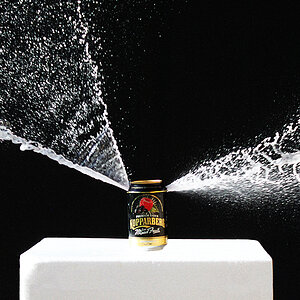- Joined
- May 1, 2008
- Messages
- 25,422
- Reaction score
- 5,003
- Location
- UK - England
- Website
- www.deviantart.com
- Can others edit my Photos
- Photos OK to edit
So we normally end up chatting about how people can post to help critiquers critique and how to receive and respond to such critique. However we don't really have many chats on the other side of the coin, on the various different methods or concepts that we work by.
So I thought it would be a good topic to approach; to get an idea of the methods that we each use to provide our own input on others photos. Sure many say "Oh I give it all honest" and suchlike, but that isn't really saying much about the 'how' its given or delivered, or even how you approach the photo itself, what you look for first etc....
So no real overarching requirement here - post tips, concepts, your overall method etc.... Just generally take part in exchanging the other side of the coin. Who knows, we might pick up some tips on critiquing ourselves, plus it might also help newer members get a bit of insight into the different members and their methods.
Myself, well just one tip thus far that's coming to the forefront of my mind and is a method I sometimes use.
Don't "grade" the overall photo in the opening lines. Saying "its good" or "its bad" or any rough description which approaches either of those two polar statements can greatly affect how a person then reads the rest of the commentary. If they read "its good" in the opening lines chances are any critical points against the quality that are mentioned will be overlooked, or assigned less attention. Similarly saying "its bad" (or the dreaded - its a snapshot) in the opening part can make what follows feel a lot more personal to them. You've already said you don't like it so any critical points are rubbing salt into that wound (and like it or not when we create something we can get very protective of it).
So what I try to do is not grade the overall photo, instead I pick it into parts. I break up the critique into rough segments, parts about exposure, composition, content, subject, angles, equipment used etc.... I then tend to rattle through these points, giving my opinion on how each of those points has come across/been used in the photo itself. I might even "grade" these - saying 'this part here is good etc....'.
With this method I'll oft end up putting the positive points first and then the negative, but the freedom of this approach is that I can chop and change, mix the good in with the bad, or put the detracting points first. Like this the reader still hasn't got a clue how I feel about the photo as a whole and instead is picking up bits here and there, dividing the photo up themselves (one hopes) as they read so that they can take each part in its own.
Then, at the end, I summarise my feelings of the photo (this is still important - one must always be able to step back and view things as a whole); by this point they've already read my viewpoints and advice on the components, so now its time to see what the view is on all those parts added together. Hopefully, if one has explained well before, the viewpoint you give will be one that the reader has already started to identify with and also started to identify with the reasoning behind it, before applying any overall bias to their reading.
Further, whilst not essential to this approach of critique, a general view I try to take is to always contain some element of positive feedback. This might be something as simple as commenting that the experience during the taking of the shot must have been special, even if the photo itself is terrible; or might well refer only that I like the concept of the photo even if its execution has failed.
Others might disagree on this methodology of approach - in the end I consider most differing approaches valid within context, though, personally, I've always felt that an overly negative feedback works only in an enforced interaction environment; or one where the learner has a specific drive to learn from the reviewer - otherwise the net provides an environment where they can, with a few clicks, dismiss an overly negative viewpoint.
So I thought it would be a good topic to approach; to get an idea of the methods that we each use to provide our own input on others photos. Sure many say "Oh I give it all honest" and suchlike, but that isn't really saying much about the 'how' its given or delivered, or even how you approach the photo itself, what you look for first etc....
So no real overarching requirement here - post tips, concepts, your overall method etc.... Just generally take part in exchanging the other side of the coin. Who knows, we might pick up some tips on critiquing ourselves, plus it might also help newer members get a bit of insight into the different members and their methods.
Myself, well just one tip thus far that's coming to the forefront of my mind and is a method I sometimes use.
Don't "grade" the overall photo in the opening lines. Saying "its good" or "its bad" or any rough description which approaches either of those two polar statements can greatly affect how a person then reads the rest of the commentary. If they read "its good" in the opening lines chances are any critical points against the quality that are mentioned will be overlooked, or assigned less attention. Similarly saying "its bad" (or the dreaded - its a snapshot) in the opening part can make what follows feel a lot more personal to them. You've already said you don't like it so any critical points are rubbing salt into that wound (and like it or not when we create something we can get very protective of it).
So what I try to do is not grade the overall photo, instead I pick it into parts. I break up the critique into rough segments, parts about exposure, composition, content, subject, angles, equipment used etc.... I then tend to rattle through these points, giving my opinion on how each of those points has come across/been used in the photo itself. I might even "grade" these - saying 'this part here is good etc....'.
With this method I'll oft end up putting the positive points first and then the negative, but the freedom of this approach is that I can chop and change, mix the good in with the bad, or put the detracting points first. Like this the reader still hasn't got a clue how I feel about the photo as a whole and instead is picking up bits here and there, dividing the photo up themselves (one hopes) as they read so that they can take each part in its own.
Then, at the end, I summarise my feelings of the photo (this is still important - one must always be able to step back and view things as a whole); by this point they've already read my viewpoints and advice on the components, so now its time to see what the view is on all those parts added together. Hopefully, if one has explained well before, the viewpoint you give will be one that the reader has already started to identify with and also started to identify with the reasoning behind it, before applying any overall bias to their reading.
Further, whilst not essential to this approach of critique, a general view I try to take is to always contain some element of positive feedback. This might be something as simple as commenting that the experience during the taking of the shot must have been special, even if the photo itself is terrible; or might well refer only that I like the concept of the photo even if its execution has failed.
Others might disagree on this methodology of approach - in the end I consider most differing approaches valid within context, though, personally, I've always felt that an overly negative feedback works only in an enforced interaction environment; or one where the learner has a specific drive to learn from the reviewer - otherwise the net provides an environment where they can, with a few clicks, dismiss an overly negative viewpoint.
Last edited:



![[No title]](/data/xfmg/thumbnail/37/37524-6c51828efbc2361f9cfed53f63f28aa2.jpg?1619738130)








![[No title]](/data/xfmg/thumbnail/30/30994-49c5521f7b5b417f49dcd43891cbec27.jpg?1619734557)
![[No title]](/data/xfmg/thumbnail/37/37523-291af5748bb3a98408cc748fb81bb365.jpg?1619738129)
